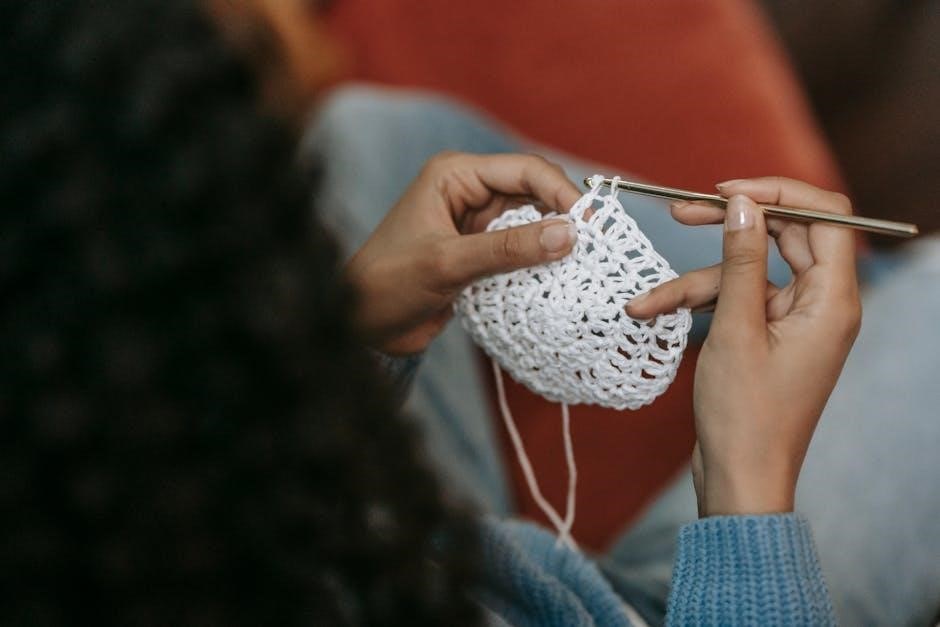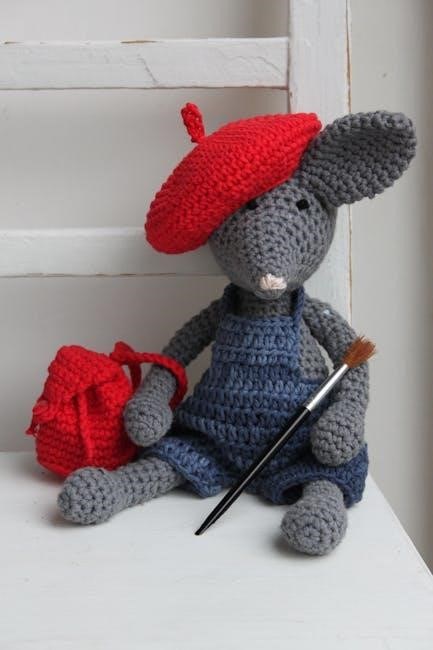Form 8955-SSA is an IRS form used by ERISA retirement plans to report separated participants with deferred vested benefits, ensuring compliance with federal regulations annually.
1.1 Overview of the Form
Form 8955-SSA is an annual IRS filing requirement for ERISA retirement plans, used to report separated participants with deferred vested benefits. It ensures compliance with federal regulations and provides essential information to the IRS. The form must be filed electronically through the IRS FIRE system and is closely linked to Form 5500. It includes details on vested account balances and plan status changes. Accurate and timely filing is crucial to avoid penalties. Recent updates and FAQs are available for guidance, ensuring proper compliance with reporting requirements.
1.2 Importance of the Form in Retirement Planning
Form 8955-SSA plays a critical role in retirement planning by ensuring compliance with ERISA and IRS regulations. It accurately reports deferred vested benefits for separated participants, aiding in retirement security. Non-compliance can result in penalties, making timely and accurate filing essential. The form helps track benefits, ensuring transparency and accountability in retirement plan administration. Its importance lies in maintaining proper documentation and adherence to federal requirements, safeguarding both plan sponsors and participants.

What is Form 8955-SSA?
Form 8955-SSA is an IRS form used by ERISA retirement plans to report separated participants with deferred vested benefits, ensuring compliance with federal regulations annually.
2.1 Definition and Purpose
Form 8955-SSA, or the Annual Registration Statement Identifying Separated Participants with Deferred Vested Benefits, is an IRS form required for ERISA retirement plans. Its primary purpose is to report information about participants who have separated from employment but still hold vested benefits. This form ensures compliance with federal regulations and provides the IRS with essential details about deferred vested benefits. It is not open to public inspection and must be filed annually, typically alongside other retirement plan filings, to maintain regulatory adherence and avoid penalties.
2.2 Key Features of the Form
Form 8955-SSA is an annual filing requirement for ERISA retirement plans, detailing separated participants with deferred vested benefits. It must be filed electronically via the IRS FIRE system, ensuring confidentiality as it is not open to public inspection. The form includes specific participant data and vested benefit amounts, with penalties for non-compliance. Its deadline aligns with Form 5500, streamlining the filing process for plan administrators. This form is crucial for maintaining regulatory compliance and accurate reporting of deferred benefits.

Purpose and Importance of Form 8955-SSA
Form 8955-SSA is an annual requirement for reporting deferred vested benefits of separated participants, ensuring compliance with ERISA and IRS regulations while maintaining accurate records for plan administrators.
3.1 Compliance with ERISA and IRS Regulations
Form 8955-SSA ensures compliance with ERISA and IRS regulations by requiring plan administrators to report deferred vested benefits of separated participants annually. This form satisfies the reporting requirements under Internal Revenue Code section 6057(a), maintaining transparency and accountability. Failure to file or inaccuracies may result in penalties, emphasizing the importance of adherence to regulatory standards. The form must be filed electronically through the IRS FIRE system, ensuring timely and accurate submissions to avoid non-compliance issues.
3.2 Reporting Deferred Vested Benefits
Form 8955-SSA is specifically designed to report deferred vested benefits of separated participants in ERISA retirement plans. This ensures that plan administrators accurately track and disclose benefits owed to former employees. The form requires detailed information about each participant’s vested account balance, ensuring transparency and compliance with federal regulations. Accurate reporting is crucial, as errors or omissions can lead to penalties. The form also helps verify that benefits are properly managed and distributed according to legal requirements, safeguarding both plan integrity and participant rights.
Who Needs to File Form 8955-SSA?
Form 8955-SSA must be filed by plan administrators and sponsors of ERISA retirement plans, particularly those required to file Form 5500, ensuring compliance with IRS regulations.
4.1 Plan Administrators and Sponsors
Plan administrators and sponsors of ERISA retirement plans are responsible for filing Form 8955-SSA. They must report separated participants with deferred vested benefits, ensuring compliance with IRS regulations. This form is crucial for tracking benefits and maintaining plan integrity. Administrators must accurately prepare and submit the form annually, adhering to deadlines and electronic filing requirements. Proper documentation and timely reporting are essential to avoid penalties and ensure compliance with federal retirement plan regulations.
4.2 Types of Retirement Plans Covered
Form 8955-SSA applies to ERISA retirement plans and Section 403(b) plans required to file Form 5500. It covers qualified retirement plans and those with separated participants having deferred vested benefits. The form ensures compliance with IRS and DOL regulations, accurately reporting benefits and maintaining plan integrity. Proper filing is crucial for avoiding penalties and meeting federal requirements.

Filing Requirements and Deadlines
Form 8955-SSA must be filed annually, with deadlines aligning with Form 5500. Extensions are available, and electronic filing is required through the IRS FIRE system.
5.1 Filing Deadline and Extensions
The filing deadline for Form 8955-SSA aligns with Form 5500, typically October 15 for the previous plan year. Extensions are available, with an automatic 2-month extension for overseas filers. Additional extensions may be granted under specific circumstances. The form must be filed electronically, and missing the deadline can result in penalties. Plan administrators should ensure timely submission to avoid compliance issues. Always verify the latest IRS guidelines for any updates or changes to filing deadlines and extension rules.
5.2 Electronic Filing Requirements
Form 8955-SSA must be filed electronically through the IRS FIRE system or an IRS-approved platform like Tax1099. Electronic filing ensures accuracy and compliance with IRS regulations. Filers must register for a Transmitter Control Code (TCC) and use approved software. The IRS does not accept paper filings for this form. Ensure all data is accurate and submitted securely to avoid penalties. Electronic filing is mandatory, and filers should verify their software supports the latest form updates before submission.

How to File Form 8955-SSA
File Form 8955-SSA electronically via the IRS FIRE system or approved platforms like Tax1099. Ensure accurate data entry and submission to meet compliance requirements efficiently.
6.1 Step-by-Step Filing Process
Prepare participant data, including names, SSNs, and vested benefits.
Access the IRS FIRE system or approved platforms like Tax1099.
Complete Form 8955-SSA accurately, ensuring all required fields are filled.
Review the form for errors or omissions.
Submit electronically, following IRS guidelines.
Maintain a copy for records and compliance purposes.
6.2 Using IRS FIRE System for Electronic Filing
The IRS FIRE (Filing Information Returns Electronically) system is a secure platform for submitting Form 8955-SSA. To use it, register for a Transmitter Control Code (TCC) and complete the required setup. Ensure your form is accurately prepared and saved in the correct format. Upload the form through the FIRE system, following the step-by-step instructions. Once submitted, the IRS will confirm receipt. For assistance, third-party services like Tax1099 can streamline the process, ensuring compliance with electronic filing requirements.

Participant Reporting on Form 8955-SSA
Form 8955-SSA requires detailed reporting of separated participants with deferred vested benefits, ensuring accurate disclosure of their account balances and compliance with IRS regulations.
7.1 Identifying Separated Participants
Identifying separated participants involves determining individuals who have terminated employment but retain deferred vested benefits under an ERISA retirement plan. This step is crucial for accurate reporting on Form 8955-SSA, as it ensures compliance with IRS regulations. Separated participants are typically those who have left the employer but still have a vested account balance. Plan administrators must carefully review employment records and benefit plans to identify these individuals and report their deferred benefits accordingly to avoid penalties and ensure regulatory compliance.
7.2 Reporting Deferred Vested Benefits
Reporting deferred vested benefits on Form 8955-SSA requires precise details about separated participants’ account balances. This includes vested amounts, distribution options, and payment statuses. Accurate reporting ensures compliance with IRS regulations and avoids penalties. The form mandates disclosure of benefits that remain with the plan post-separation, providing a clear financial snapshot. Plan administrators must ensure all data aligns with records to maintain transparency and fulfill legal obligations effectively.

Changes in Plan Status and Penalties
Changes in plan status can trigger reporting requirements and penalties if not properly documented. Non-compliance with Form 8955-SSA filing deadlines may result in IRS penalties, emphasizing the importance of timely and accurate submissions to avoid financial repercussions and ensure regulatory adherence.
8.1 Impact of Plan Status Changes
Changes in plan status, such as mergers, acquisitions, or terminations, can significantly impact Form 8955-SSA filing requirements. These changes may trigger new reporting obligations or alter the scope of deferred vested benefits. Plan administrators must update participant data and ensure compliance with revised regulations. Failure to accurately reflect plan status changes can lead to reporting errors and penalties, emphasizing the importance of timely and precise submissions to maintain regulatory compliance and avoid financial repercussions.
8.2 Penalties for Non-Compliance
Non-compliance with Form 8955-SSA requirements can result in penalties, including fines of $250 per participant for late or incomplete filings. The IRS may also impose additional penalties for failure to furnish required information or for errors in reporting. Plan administrators must ensure timely and accurate submissions to avoid financial repercussions. Penalties underscore the importance of adhering to filing deadlines and maintaining precise records to comply with IRS regulations and avoid costly consequences for non-compliance.

Recent Updates and FAQs
The IRS has issued FAQs clarifying Form 8955-SSA filing requirements and addressing common questions about deferred vested benefits reporting and compliance deadlines.
9.1 IRS FAQs and Clarifications
The IRS has released FAQs addressing common questions about Form 8955-SSA, including when plan administrators may answer “yes” to specific questions. These clarifications help ensure accurate reporting of deferred vested benefits. The IRS also provided updates on filing deadlines and penalties, emphasizing the importance of timely submissions. Additionally, the FAQs offer guidance on resolving filing errors and understanding the form’s requirements for separated participants. Staying informed about these updates is crucial for compliance and avoiding penalties.
9.2 Recent Changes in Filing Requirements
Recent updates include the IRS extending filing deadlines for Form 8955-SSA for certain plan years, such as 2009 and 2010, due to technical issues. Additionally, the IRS now requires electronic filing through the FIRE system, streamlining the process. Plan administrators must ensure compliance with these changes to avoid penalties. The IRS also clarified that Form 8955-SSA must be filed separately from Form 5500, with specific instructions provided in Publication 4810. Staying updated on these changes is essential for accurate and timely submissions.
Common Challenges and Solutions
Technical issues with PDF forms and electronic filing glitches are common. Using IRS guidelines and third-party services can help resolve these challenges efficiently and prevent penalties.
10.1 Technical Issues with PDF Forms
Technical issues with Form 8955-SSA PDFs often arise, such as fillable forms not displaying correctly in certain browsers or viewers. Some users face glitches when downloading or opening the form. To resolve these, ensure Adobe Reader is installed and properly configured. Downloading the form directly to your device and opening it with Adobe Reader can often fix display issues. Additionally, checking for updates to your PDF viewer and browser can prevent such problems. Always verify the form’s compatibility with your software before filing.
10.2 Resolving Common Filing Errors
Common filing errors for Form 8955-SSA include incorrect participant data, missed deadlines, and technical glitches. To resolve these, verify data accuracy before submission and ensure timely filing. For technical issues, check Adobe Reader configuration and use compatible software. The IRS FIRE system offers tools to correct errors during electronic filing. Consulting IRS FAQs and seeking assistance from third-party filing services can also help address and resolve common issues efficiently, ensuring compliance and avoiding penalties. Proper documentation and double-checking submissions are key to preventing errors.

Best Practices for Compliance
Ensure timely reporting, maintain accurate records, and verify participant data before filing. Utilize IRS resources and guidelines to stay informed on compliance requirements and updates for Form 8955-SSA.
11.1 Timely Reporting and Accuracy
Accurate and timely reporting is crucial for compliance with Form 8955-SSA. Ensure all data, including participant information and deferred vested benefits, is correct before submission. Adhere to IRS deadlines to avoid penalties. Use IRS guidelines and resources to verify details and maintain proper documentation. Double-check calculations and participant statuses to prevent errors. Timely filing demonstrates compliance and avoids potential penalties, ensuring smooth processing by the IRS. Accuracy also helps in maintaining trust and avoiding legal complications. Utilize IRS tools and resources for guidance to ensure precise reporting.
11.2 Maintaining Proper Documentation
Maintaining accurate and organized documentation is essential for Form 8955-SSA compliance. Keep detailed records of participant data, deferred vested benefits, and filing history. Ensure all documents are securely stored and easily accessible for audits. Regularly update records to reflect changes in participant status or plan details. Proper documentation supports timely and accurate reporting, reducing the risk of errors or penalties. It also aids in resolving any discrepancies and ensures compliance with IRS regulations and ERISA requirements. Organized records facilitate smoother interactions with the IRS and plan administrators.

Integration with Other IRS Forms
Form 8955-SSA integrates with Form 5500 for annual retirement plan reporting and Form SS-4 for EIN registration, ensuring comprehensive compliance with IRS requirements and regulations.
12.1 Relationship with Form 5500
Form 8955-SSA is closely linked with Form 5500, as both are required for ERISA retirement plans. The filing deadline for Form 8955-SSA aligns with Form 5500, ensuring coordinated reporting. While Form 5500 serves as the annual return for employee benefit plans, Form 8955-SSA specifically reports separated participants with deferred vested benefits. Both forms must be filed electronically, and they complement each other in fulfilling IRS and ERISA compliance requirements for retirement plans.
12.2 Connection to Form SS-4
Form 8955-SSA is indirectly connected to Form SS-4, as the latter is used to obtain an Employer Identification Number (EIN), which is required for filing Form 8955-SSA. The EIN is essential for identifying the plan sponsor or administrator when submitting the form to the IRS. While Form SS-4 is a one-time application, Form 8955-SSA is an annual requirement, ensuring compliance with retirement plan reporting obligations.
Case Studies and Examples
Case studies highlight practical scenarios, such as a mid-sized company correcting filing errors or a large plan illustrating deferred vested benefits reporting, aiding understanding of Form 8955-SSA.
13.1 Practical Scenarios for Filing
A mid-sized company faced challenges with electronic filing due to software compatibility issues, leading to delayed submissions. By switching to IRS-approved platforms like Tax1099, they resolved errors and ensured timely compliance, avoiding penalties. This scenario underscores the importance of understanding technical requirements and exploring reliable filing solutions to meet deadlines effectively.
13.2 Real-Life Examples of Compliance
A large employer corrected filing delays after the IRS extended deadlines for 2009 and 2010 plan years, ensuring compliance. Another organization used IRS-approved Tax1099 to e-file Form 8955-SSA, avoiding penalties. These examples highlight the importance of adhering to deadlines and utilizing approved platforms for accurate submissions, ensuring transparency and meeting regulatory standards effectively.
Resources and Support
IRS publications, third-party filing services, and tools like Tax1099 provide guidance and assistance for completing and submitting Form 8955-SSA accurately and efficiently online.
14.1 IRS Publications and Guidelines
The IRS provides essential resources, including Publication 4810, which details filing requirements for Form 8955-SSA through the FIRE system. Additionally, the IRS offers FAQs and draft forms for informational purposes, though they shouldn’t be used for actual filing. The IRS has also extended filing deadlines in the past, demonstrating their commitment to supporting filers. These resources ensure accurate and timely compliance with all regulatory requirements.
14.2 Third-Party Filing Services
Third-party services like Tax1099 and ftwilliam.com offer streamlined solutions for filing Form 8955-SSA electronically. These platforms provide secure, IRS-approved methods to submit forms, ensuring accuracy and compliance. They often include features like step-by-step guides, data import options, and real-time notifications. Many services integrate with popular accounting software, such as QuickBooks and Xero, simplifying the process. Using these tools can save time, reduce errors, and ensure timely filing, making compliance more manageable for plan administrators and sponsors.
Conclusion
Form 8955-SSA is essential for reporting deferred vested benefits, ensuring compliance with IRS regulations. Timely and accurate filing is crucial for plan administrators to avoid penalties and maintain proper documentation.
15.1 Summary of Key Points
Form 8955-SSA is crucial for reporting deferred vested benefits of separated participants in ERISA plans. It ensures compliance with IRS and ERISA regulations, requiring annual electronic filing. The form must be submitted alongside Form 5500, with penalties for non-compliance. Recent updates include FAQs clarifying reporting requirements and extensions for filing deadlines. Proper documentation and timely submission are essential to avoid penalties. Utilizing IRS resources and third-party services can simplify the process, ensuring accuracy and adherence to regulatory standards.
15.2 Final Tips for Successful Filing
Ensure accuracy by verifying participant data and deferred vested benefits before submission. Utilize IRS resources like the FIRE system for electronic filing and consult Tax1099 for streamlined processing. Double-check deadlines and file extensions to avoid penalties. Use fillable PDFs for clarity and maintain proper documentation for audit purposes. Stay updated on IRS FAQs and recent form revisions to ensure compliance. Consulting with tax professionals can further simplify the process and guarantee adherence to all regulatory requirements.






























